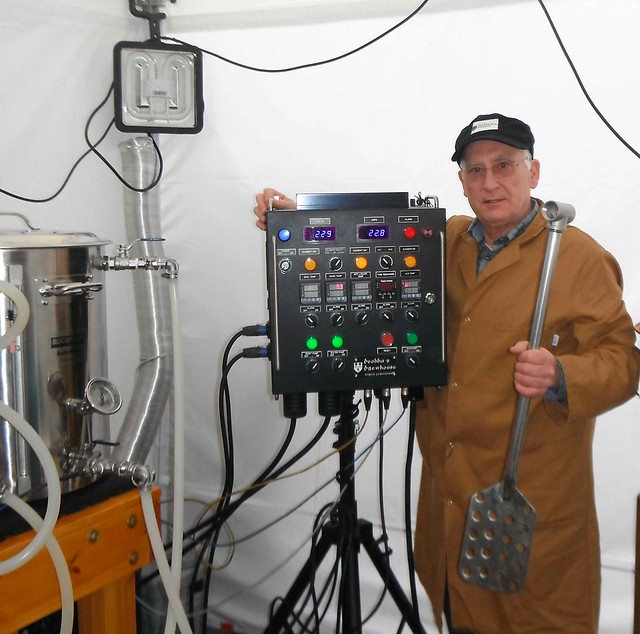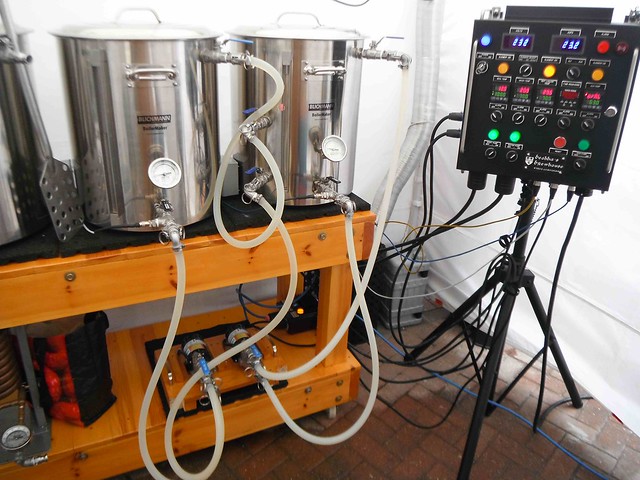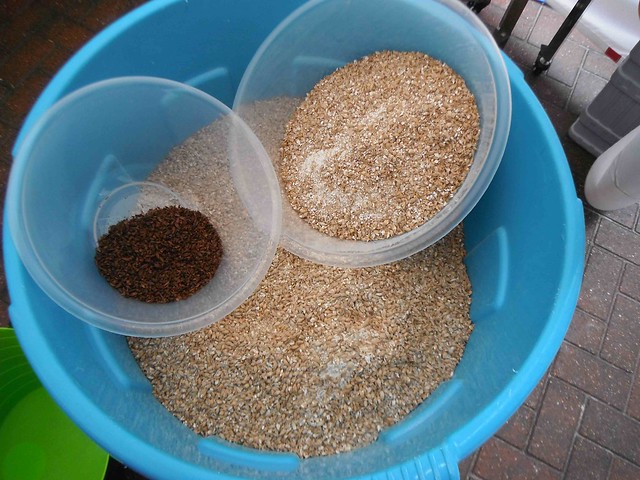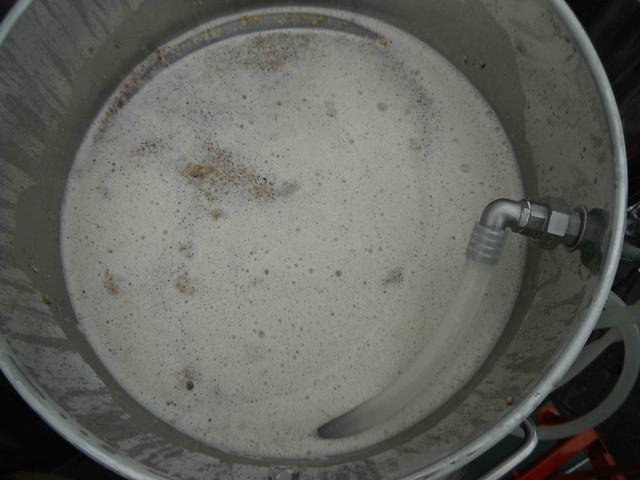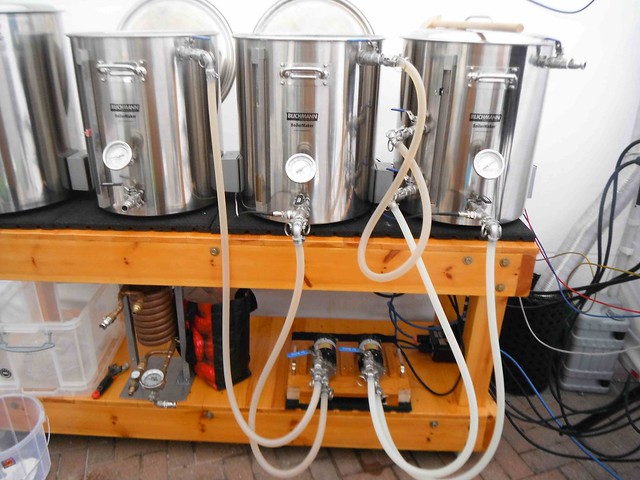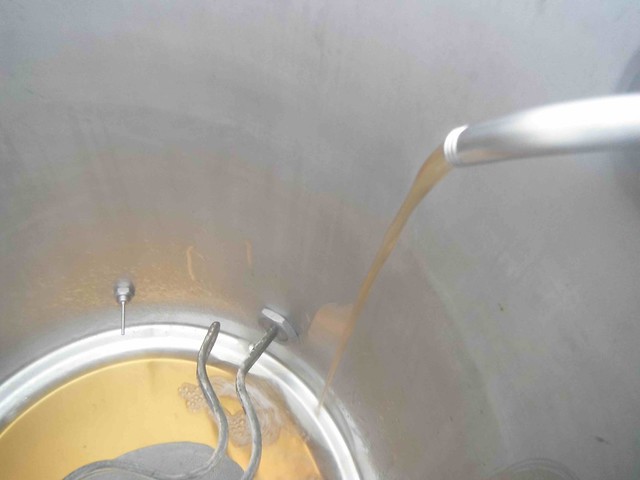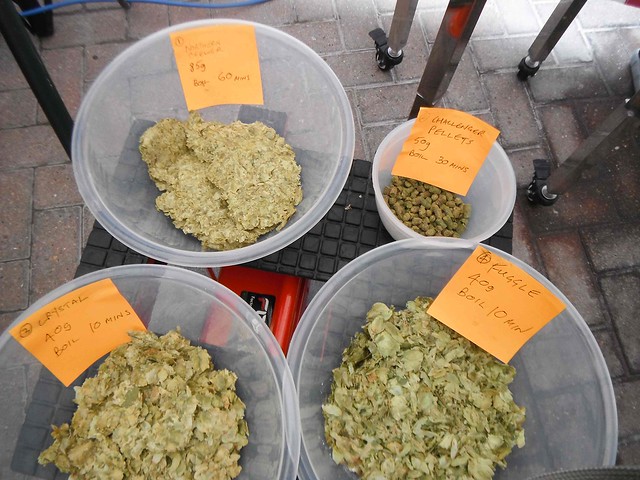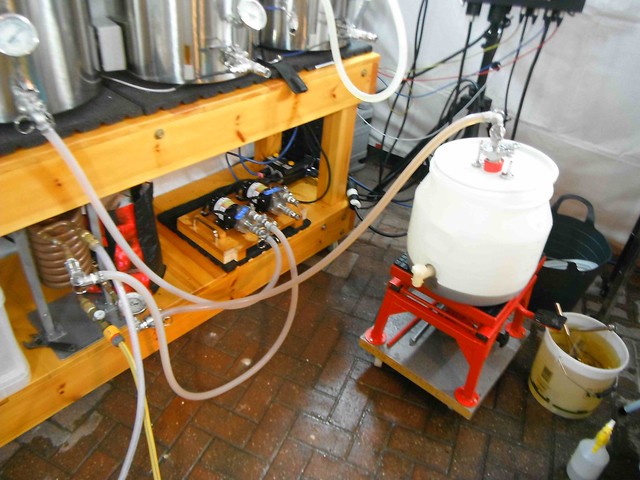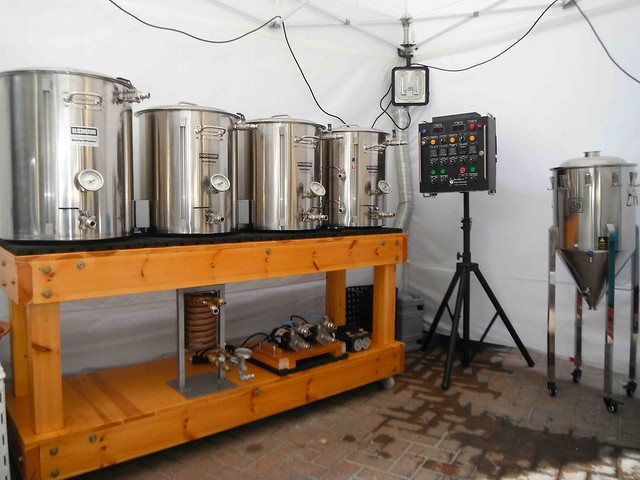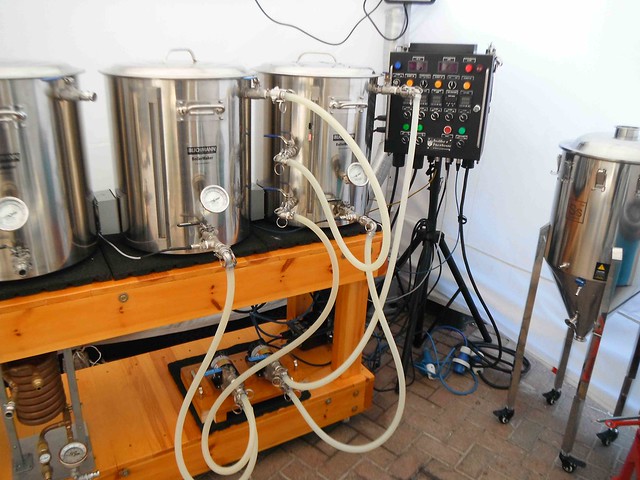So now on to part 3, which is brewing a Brown Ale of the Northern variety. The first gyle, a barley wine, was made as a “no sparge” from the first runnings, and will take a few years to age properly, but here I want to make a session ale that can be enjoyed right away. This will be made by adding more liquor to the previous mash grains in the mash tun, adding additional crystal and roasted malts, and steeping/vorlaufing the new mix for 30 mins before running off. Here are the recipe details:
Recipe Specifications
————————–
Boil Size: 44.79 l
Post Boil Volume: 38.54 l
Batch Size (fermenter): 32.00 l
Bottling Volume: 29.00 l
Estimated OG: 1.051 SG
Estimated Colour: 52.6 EBC
Estimated IBU: 24.3 IBUs
Brewhouse Efficiency: 54.00 %
Est Mash Efficiency: 62.4 %
Boil Time: 75 Minutes
Ingredients:
————————–
60.00 l Thames Water
300.00 mg Potassium metabisulphite
55.00 ml CRS/AMS
15.00 kg Maris Otter (Crisp) (7.9 EBC) 90.4 % (grains left from first brew already in mash tun)
1.00 kg Crystal Malt Dark (240 EBC) 5.6 %
0.50 kg Oats, Golden Naked (Simpsons) (18.0 EBC) 2.8 %
0.20 kg Chocolate Malt Crushed (1050 EBC) 1.1 %
45.00 g Northdown leaf [6.88 %] – Boil 60 mins
0.50 Items Protafloc Tablet (Boil 15.0 mins) Fining
25.00 g East Kent Goldings [5.93] Boil 10 mins
0.50 tsp Yeast Nutrient WLN1000 (Boil 10.0 mins)
2.0 pkg London Ale (White Labs #WLP013)
Mash Schedule: Steep, then vorlauf to allow grain bed to form before run off.
Total Grain Weight: 17.70 kg (including mash grains from first brew)
—————————-
Mash Step Add 56.61 l of water and heat to 77.0 C 77.0 C 30 min
60L of Thames Water treated with 55ml of CRS. ph 5.33, alkalinity 21.
Here’s a picture of the grains in the mash tun left after the run-off from the first brew:
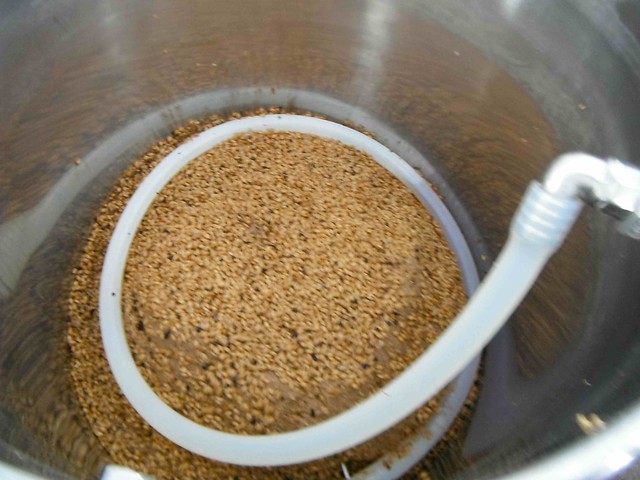
The next batch of crystal and roast grains ready to be added:
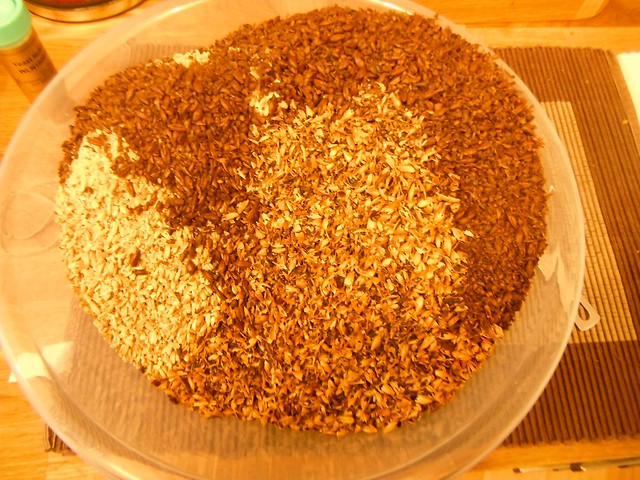
I am using a fairly new grain that has recently appeared on the home brew market – Golden Naked Oats. This a huskless oat crystal malt described as an “Exotic ingredient for a subtle nutty difference”. The sales jargon for this grain says:
“Sweet berry-nut flavour. Use to add a deep golden hue, light caramel flavours, and a creamy, satiny finish. This unique product from Simpsons has a special, sweet berry-nut flavour. Used at a rate of 4-15% of total grist by weight, Golden Naked Oats will deliver a deep golden hue with light caramel flavours to the finished beer as well as a creamy, satin finish.”
Sounds good, if not poetic! We shall see what difference it makes when it comes to the drinking.
Here’s a shot inside the mash tun just after finishing the vorlauf and before run-off into the boil kettle:
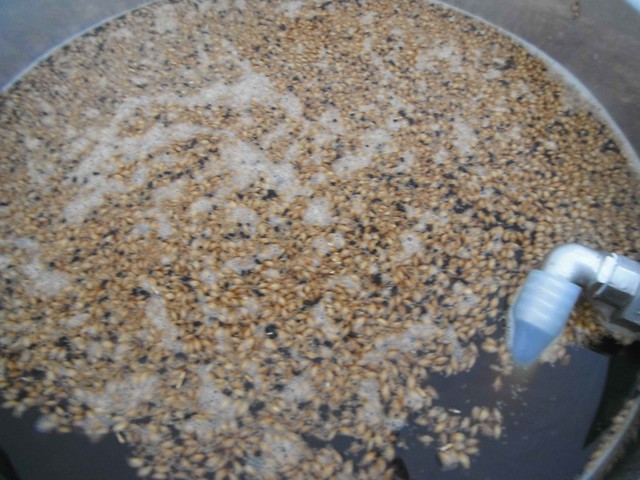
Running the clear mash liquor into the 100L boil kettle. It’s a lovely dark colour:
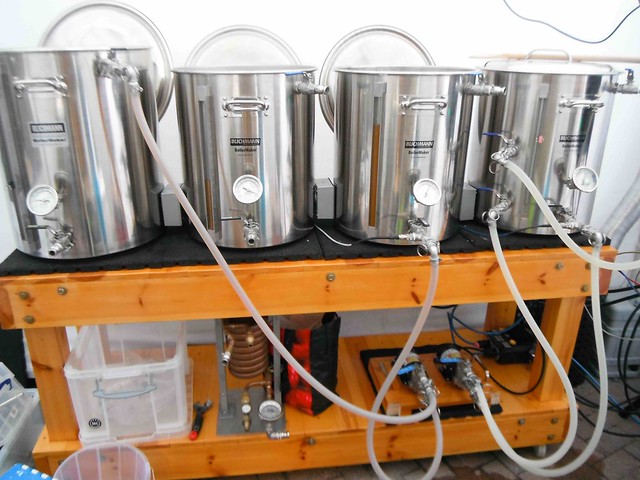
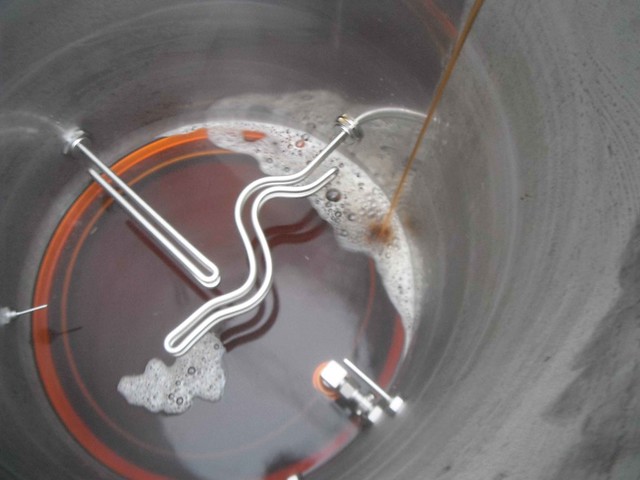
Hops ready to go:
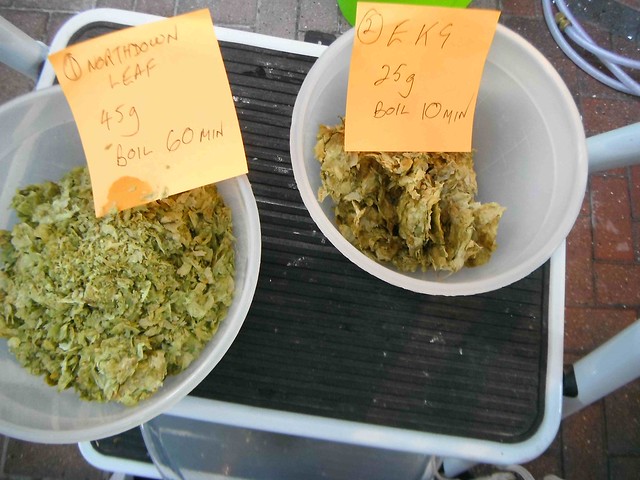
After the 75 min boil, a picture showing the cooling and running into the conical fermenter:
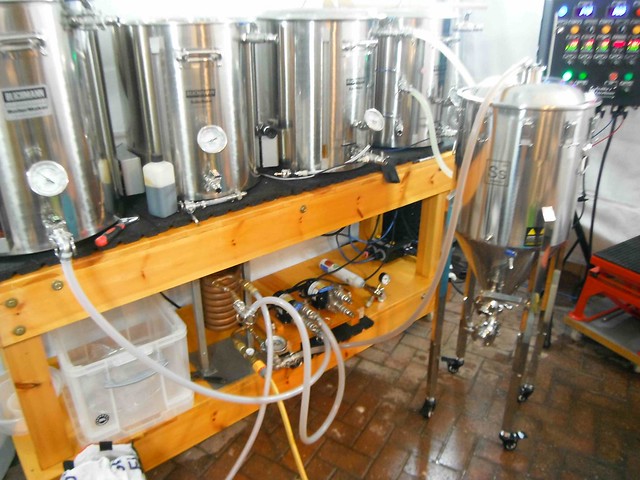
As in all my brews, pure oxygen was pumped into the chilled wort using a wand airstone for 60 secs before pitching. Final collected wort was 32L at an OG of 1.043.
So, now that my first parti-gyle brewing session is all over, what do I think? As compared to the standard one-off brew, it can be quite complicated. You have to keep several proverbial balls in the air at the same time, for instance, there are two boil kettles to watch and you need much more treated water. That can involve a double set of water calculations tailored to each brew, as the first and second runnings have a different composition, and not just of sugars. It is also hard to work out, and consequently plug into brewing software, the brewing and mash efficiency for the second brew as you cannot tell with any accuracy the sugars remaining in the ‘spent’ grains.
On the plus side, the second brew gyle does not have to be “re-mashed”, as all the conversion has already taken place. This makes it much quicker to do multiple brews. I would never be able to do two full brews in a day with the normal all-grain mash process.
The main lesson learnt with my parti-gyle session was in under estimating the potential liquor absorption by the grains. I found that initially the mash tun level for the second brew was about 5L short. I also miscalculated the temperature drop when I added the hot treated water from the HLT to the second gyle grains. The steeping temperature dropped to 70C instead of 76C, so my steeping and vorlauf extraction may have fell slightly short on gravity points. At this point I had used all the water from the HLT in refilling the mash tun, so I could not recirculate the mash liquor through the HLT HERMS coil to heat it up.
Having tried the parti-gyle method though, I can say that it was immensely enjoyable and I feel I have earnt another brewer’s stripe to go on my arm. And yes, I would do it again – I am already thinking of a strong Scotch ale and a dark mild parti-gyle. Finally, a picture of the contented brewer, weapon in hand, at the end of a hard day’s work, as taken by SWMBO.
